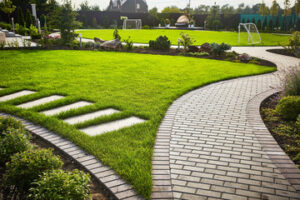With the right design and proper material, car wraps can completely transform your ride and boost its resale value. But choosing the wrong material can damage your vehicle.
The most popular options for a car wrap include matte and glossy vinyl colors that mimic the appearance of chrome, leather, or carbon fiber. These wraps also provide a protective layer against chips and scratches, helping maintain the original paint. Contact Car Wrap Materials now!

A vinyl wrap is a thick, colorful, synthetic plastic that’s used to cover a vehicle. It’s durable and relatively inexpensive, making it a popular alternative to repainting. Vinyl is available in a range of finishes, from matte to glossy. It’s important to choose a professional installer. This will ensure the job is done correctly and that your car wrap lasts for years.
Choosing the right color is also crucial. Some brands of wraps are designed to resemble paint, while others are meant to be eye-catching and come with specialty graphics. Businesses often use wraps to add their logo to vehicles in a way that’s more cost effective than painting. Individuals can also use them to make their cars and trucks look unique and stand out from the crowd.
Before you start wrapping, it’s a good idea to sketch out the project and measure your vehicle. It’s also a good idea to work in an indoor space to avoid dust, wind, and extreme temperatures. Colder temperatures can cause the vinyl to become brittle, while excessive heat may prematurely activate the adhesive.
Once you’re ready to begin, start with a flat area such as the hood. If you’re new to wrapping, this is a good place to start because it’s easy to handle and will build your confidence. When working with vinyl, it’s important to stretch it gently. This prevents wrinkles and helps the wrap conform to curves and recessed areas. If you’re having trouble getting the material to stretch properly, try applying heat or using a plastic application tool.
As you move around to the more complex parts of your car, apply the vinyl carefully and slowly. Be sure to remove any air bubbles as you go. If you encounter any problems, such as a small scratch or nick, don’t ignore them. These can spread and damage the wrap, compromising its longevity.
To extend the lifespan of your wrap, avoid harsh chemicals and abrasive sponges when washing your vehicle. Choose pH-neutral, non-abrasive cleaners that won’t harm the vinyl or cause it to fade. Also, try to hand wash your vehicle rather than use an automatic carwash whenever possible.
Decals
The right car wrap materials can take your vehicle’s aesthetic to the next level. Whether you want to make a statement or keep it subtle, the options are endless. From matte to chrome metallic, carbon fiber and mirror wraps, there’s something for everyone. Choosing the best material depends on your lifestyle, maintenance habits, and the overall vibe you want your car to exude.
Decals are a popular way to customize vehicles without the cost of a full-on paint job. They’re also more durable than other wraps, meaning they won’t chip or scratch easily. This makes them an ideal choice for people who like to wash their cars frequently or drive in harsh weather conditions.
Before mass production begins, you’ll receive a PDF proof of your decal design to inspect. Compare the color and layout to your original vision, and communicate any changes immediately. Once you’re satisfied, give your approval to proceed with production.
In recent years, wraps have gained popularity not only for commercial purposes but also as a way to personalize passenger vehicles. Unlike conventional paint jobs, which can be costly and time-consuming, car wraps are easy to install and offer a quick, affordable way to change your vehicle’s color, finish, or design. They’re also durable enough to protect the underlying paint from sun damage and minor scratches, maintaining resale value in the long run.
Glossy wraps are a popular choice, but matte wraps are growing in popularity as well. They offer a non-reflective, understated look that’s perfect for people who prefer subtlety or a sleek, aggressive style. Carbon fiber vinyl is another popular option, offering the look of real carbon fiber in a lightweight and durable material.
There are also specialty wraps that add texture or dimension to your vehicle’s appearance. Brushed wraps, for example, offer a brushed metal look that’s popular with people who want to add a touch of luxury to their ride.
Other types of car wraps include holographic and pearlescent. Holographic wraps feature a multicolor pattern that shifts as the light hits it. The result is a shimmering effect that’s sure to turn heads. Iridescent wraps are similar, except they have a wider range of colors and resemble the iridescence of gemstones.
Paint Protection Films
Vinyl wraps are a popular car modification option for customizing a vehicle’s aesthetic and adding a layer of protection against minor damage. However, it’s important to keep in mind that they don’t offer the same level of protection as paint protection film (PPF).
PPF is a clear urethane film designed to protect vehicles from rock chips, bug splatter, swirl marks, light scratches and fading. The film is a lot thicker than vinyl wraps, measuring at 8-to-12 mil in thickness. This makes it a lot stronger, more durable, and provides stain resistance. It also features a self-healing mechanism, meaning that scratches and scuffs can be reworked with the application of heat, much like how a scratch or chip on a smartphone screen heals itself.
Unlike vinyl wraps, which are made from polyvinyl chloride (PVC), paint protection films are composed of polyurethane. This material gives the film exceptional strength while ensuring it is incredibly flexible and transparent. This is an extremely important quality to have, as the ability to flex and bend without cracking or separating from the substrate is key to maintaining its durability.
Aside from providing a high level of protection, PPF also offers a number of other benefits to vehicle owners. For example, it can be applied to a vehicle before a long-distance transport to ensure that the original factory finish is protected during the hauling process. This is a common service offered by detailing companies, and it is also purchased by private individuals who want to ensure that their vehicle arrives at its destination in perfect condition.
Thinner wraps (around 3 mils) are ideal for purely cosmetic purposes, such as color and appearance changes. They are easy to apply and offer a good balance between flexibility and transparency. Thicker wraps (6 mil and up) are used for more aggressive protection from stone chips and dings. These wraps are more resistant to the wear and tear of the road, but they are more expensive and require professional installation.
It’s also important to remember that PPF is clear and will show any imperfections in your car’s original paint job. This is why it is best to apply the wrap when the vehicle is brand new. However, it can still be applied to a car after its been driven for a bit, though the effectiveness may be diminished by the amount of damage that has already been done.
Clear Braces
A clear brace wrap is the best way to protect your vehicle’s bumper, fender, and wheel arches from scratches, scrapes, and road debris. It will also help prevent fading and discoloration from sun exposure. It can be applied over the vehicle’s factory paint or on a vinyl wrap, and it will provide a smooth surface that is easy to wipe clean and maintain.
There are a wide range of vehicle wrap materials to choose from, ranging from gloss and matte to metallic and textured options. Each has unique visual and tactile differences that will make your car stand out from the crowd. Regardless of which option you choose, a quality product from an established brand like Oracle, 3M, or Avery Dennison will ensure durability and ease of installation.
Glossy vehicle wraps have a glossy appearance that mimics the look of a fresh coat of paint. This option is popular for personal and commercial use because it suits various design styles, while providing a long-lasting finish.
Carbon fiber and chrome vehicle wraps have a metallic, eye-catching look that stands out on the street. These finishes are often applied to vehicles for aesthetics, but they also offer increased protection against environmental damage. However, it’s important to note that these types of wraps can be difficult to apply properly. Because of their shine, any imperfections in the application process will be highly visible and could ruin the look of your wrap.
Matte vehicle wraps are a good option for those who want to change their car’s color without having to invest in repainting or refinishing. This type of wrap also provides a unique, non-reflective finish that will highlight the lines and curves of your vehicle’s body.
Calendared vinyl wraps are made through a process known as calendaring, where the vinyl is pressed between heated rollers to create a thin and flexible sheet. These types of wraps are typically less expensive than other options, making them an attractive choice for individuals on a budget.
While a calendared wrap may not have the same longevity as cast or TPU, it is still a good option for individuals looking for a cost-effective solution that will last up to 5 years. A calendared wrap is also easier to apply than TPU due to its flexibility and ability to stretch over complex curves, reducing the risk of air bubbles and wrinkles. Moreover, 3M’s advanced bonding technology—such as 3M ControlTac—makes the wrapping process smoother and faster by minimizing the initial contact area of the adhesive. This allows you to easily reposition the wrap during installation, ensuring a flawless finish.








